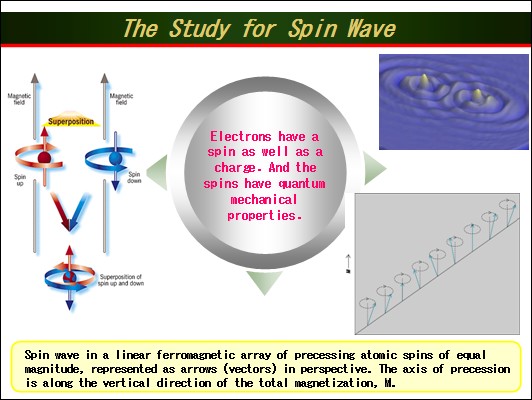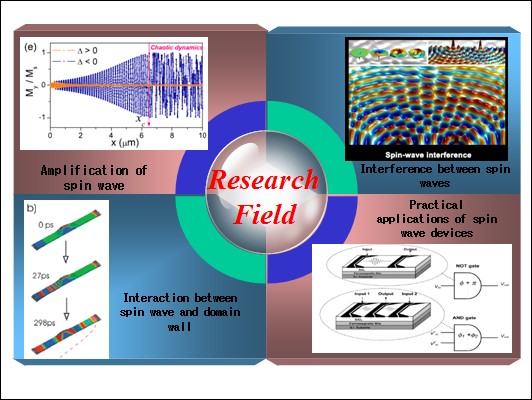PROJECT
Spin wave

Recently, the spin waves have a considerable interest because they will give us the fundamental understanding of spin dynamics. Therefore much effort has been exerted to reveal the spin wave properties such as a spectrum, linearity, confinement and so on. With the spin-transfer torque (STT) we can amplify the spin wave amplitude. However, the effect of STT on the spin wave amplification has not yet been investigated experimentally. When spin waves are propagating through two separate sources, they will interfere constructively or destructively in a magnetic film showing distinct interference patterns, so that we can confirm the wavy properties of spin wave. Magnetostatic spin waves change their phase as they pass through domain walls. The interference of merging waves depends on the domain walls. A controlled manipulation of spin-wave phases could be the first step towards nanoscaled ferromagnetic devices performing logical operations based on spin-wave propagation.

As an alternative approach to the transistor-based architecture, logic circuits with a spin wave bus do not use charge as an information carrier. Logic circuits with the spin wave bus may be beneficial in reducing power consumption and subsequently resolve the interconnection problem. Another anticipated benefit is in the enhanced logic functionality. The logic circuits with a spin wave bus allow us to provide wireless read-in and read-out.
References:
Sangkook Choi et al, APL 89, 062501 (2006).
Soo-Man Seo et al., To be published (To be updated).
Alexander Khitun et al, J. Nanoelectron. Optoelectron. 1, 71 (2006).
Riccardo Hertel et al, PRL 93, 257202 (2004).
